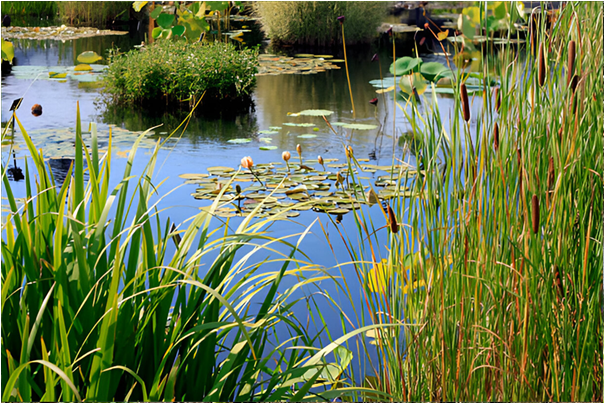A well-designed pond filter does not just clean water—it recreates nature’s purification system in your backyard.
More recent filtration systems, such as the Oase Pond Filters, draw on streams and wetlands and employ the same beneficial bacteria to liquefy waste in the same way as in the natural environment.
The That Pond Guy offers professional services to those who want to apply biofiltration systems, which combine technological experience and ecological attitude, making the recreators have crystal-clear water and a balanced environment at the same time.
Nature’s Filtration Model
We normally maintain clean waters in our natural water bodies by a combination of:
- Bacterial action – In the same way that microbes in soil and the bed of rivers turn toxic ammonia into nitrates, they are also doing so in the water.
- Plant filtration – The abundance of nutrients is swapped with surfaces that grow aquatic plants resembling wetlands.
- Water movement – The use of gentle circulation reproduces the streams that make water flow freely and become oxygenated.
In biological filters, the same processes are emulated with a medium such as lava rocks or bio-balls, so that as many bacteria colonize that material as possible.
How Biofiltration Works
The nitrogen cycle is nature’s waste management system, and pond filters replicate it:
- Ammonia from fish waste enters the water (toxic to aquatic life).
- Nitrosomonas bacteria convert ammonia to nitrites (still harmful).
- Nitrobacter bacteria transform nitrites into nitrates (plant food).
- The cycle is closed with plants taking up nitrates.
High-quality systems like Oase Pond filters accelerate this process with optimized media surfaces.
Bog Filters: Nature’s Gold Standard
Many experts consider bog filters the most effective natural filtration method because they:
- Combine bacterial action with plant uptake
- Require minimal maintenance (just annual flushing)
- Double as beautiful planted water features.
That Pond Guy often recommends them for koi ponds, using gravel beds and marginal plants to create self-cleaning ecosystems.
Enhancing Natural Processes
While biological filtration handles dissolved waste, pairing it with:
- Mechanical pre-filters (skimmers/sponges) to trap solids
- UV clarifiers for algae control
- Adequate oxygenation via waterfalls or air pumps
Creates a comprehensive system that outperforms nature’s pace without chemicals.
Lessons from the Wild
Observing natural waterways reveals key biofiltration principles:
- Shallow, rocky areas host the most bacteria (hence filter media designs)
- Plant diversity improves nutrient uptake (emulate with varied pond plants).
- Seasonal changes affect bacterial activity (adjust feeding in cooler months)
- Modern filters merely compress these natural systems into convenient and efficient units.
Choosing Your Biological Filter
Consider these factors for optimal performance:
- Fish load – More fish meansa larger filter capacity needed
- Sun exposure – Algae-prone ponds benefit from added biofiltration
- Media type – More surface area is available in materials, such as porous materials like clay beads
You can build a professionally designed Oase Pond filter product or create a homemade bog, but imitating nature ensures clearer water and healthier fish in the long run. Since you will not be fighting against nature but working in harmony with it, you will not waste your time on maintenance, but can enjoy your water paradise.

